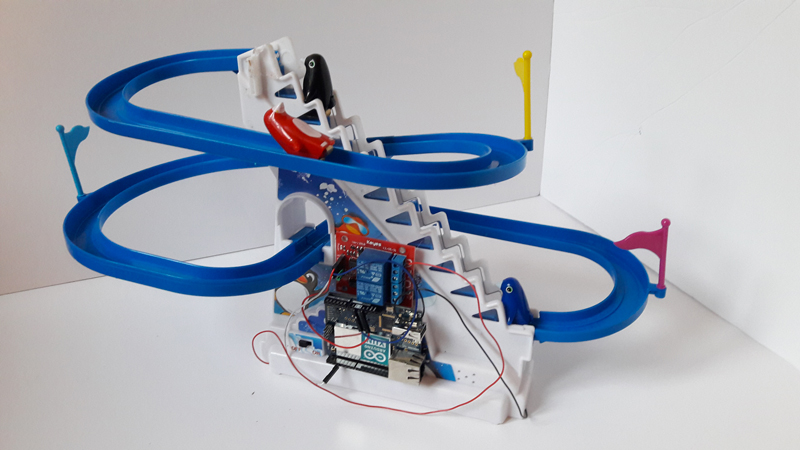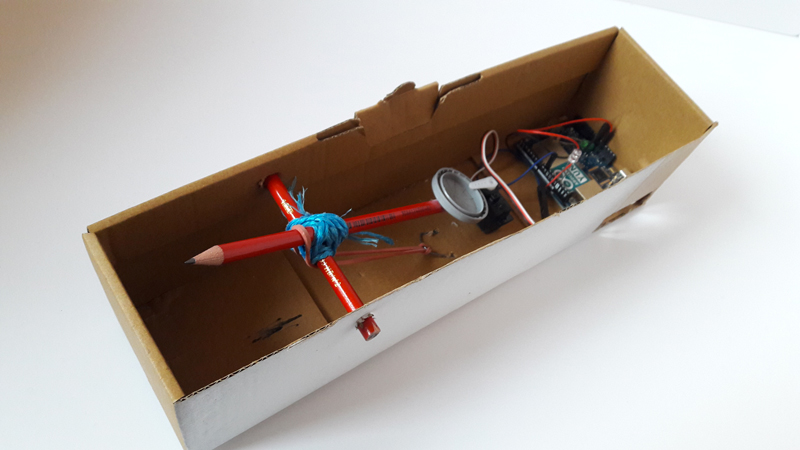Makers, open your boxes!
Published 28 February 2017 by Carine Claude
For coding, prototyping or just having fun, makers are always outdoing each with clever ways to fit digital fabrication into a box. Part 1 of our selection of kits, cases and other DIY boxes.
Makers like mobility, and they will just as soon pack up their knowledge… into a suitcase. Often educational, these boxes are designed to introduce you to digital fabrication, accompany you through your first foray into programming, or simply help you discover electronics. For more advanced makers, some are specialized—electro-acoustic music, connected objects… Part 1 of our selection focuses on boxes for coders, makers and artists, while next week, Part 2 will take a look at DIYbio boxes.
Boxes for coders
Boolean Box: just for girls
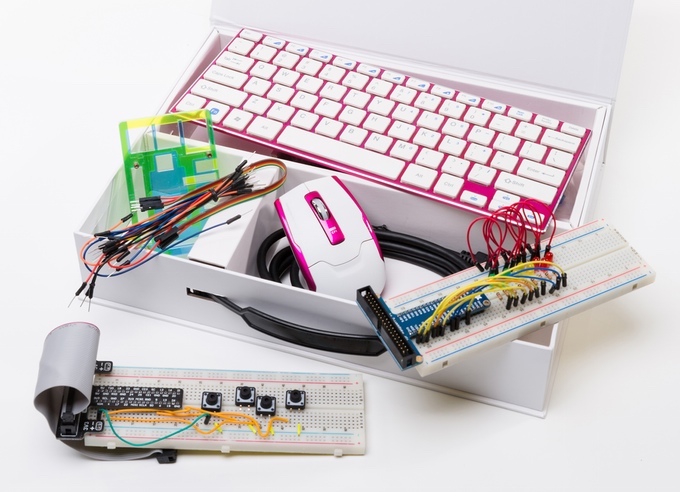
Girl power! The Boolean Box is a DIY kit that teaches girls aged 8 and above to code. The idea is to counter the underrepresentation of women in the technology industry by exposing them to programming at a young age. Featuring a Raspberry Pi 3 (the latest model), the box contains everything they need to build their own nano-computer, while also learning about basic electronics. The kit includes wires, resistors, LEDs, a breadboard, software such as Scratch, Python and Minecraft, as well as a pink keyboard and mouse. Launched in September 2016, their Kickstarter campaign has just passed their goal of $45,000. The first boxes, sold for $143, shipped in December.
Presentation video of the Boolean Box:
Kano: DIY computer for all
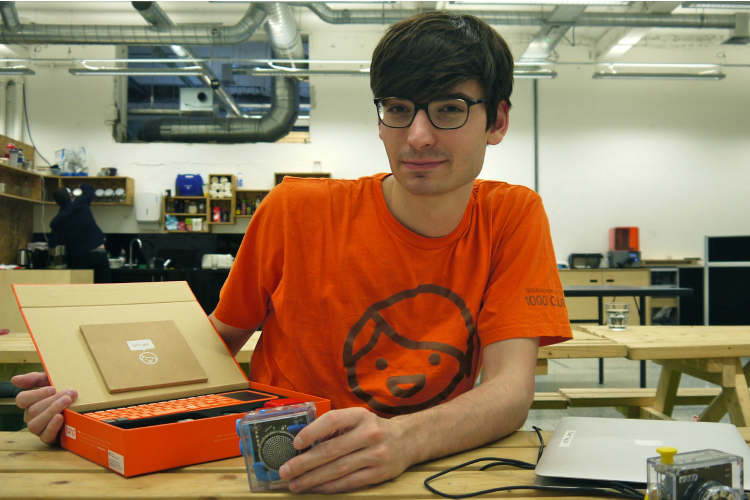
It’s the DIY computer success story. Kano, the start-up launched in 2013 by Alex Klein, a 26-year-old Brit (whom we met last October), has sold more than 100,000 kits to build your own computer and federates a community of 115,000 members. The founder’s mission is to give access to computers to as many people as possible, by creating a computer that can be built by anyone in just a few minutes, as easily as assembling Lego. And it works. In 2016, Kano was named the UK’s fastest-growing tech start-up, with a revenue in excess of $15 million in May 2015. Accessible to children from the age of 6, the basic kit can be accessorized with LED screens, cameras, speakers. Once the computer has been assembled, users can create Javascript programs using both block-based and text-based programming. From 200€ ($210).
How to build the Kano computer in 107 seconds:
La Malinette: build it yourself
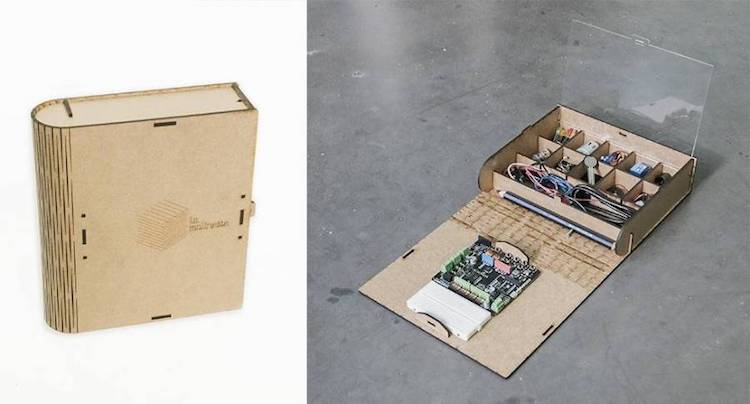
With its LFO fablab, the organization Réso-nance and its friends at Zinc have been exploring educational and digital media as a way to spread maker culture in Marseille and beyond. Since 2012, they have been developing La Malinette, an open source kit that introduces connected objects and interactive systems, or how to convert an entry signal (sensor) into an action (actuator). La Malinette includes software, an Arduino board, a breadboard, 5 sensors, 5 actuators and prototyping wires, all inside a box that folds like a book. In order to build your own Malinette (LFO doesn’t sell it), refer to their complete list of hardware for all the necessary materials. There are two options to make the box itself: out of laser-cut wood or CNC-cut corrugated cardboard.
Used mainly for teaching in schools, but also for art performances, La Malinette has appeared in several sound and multimedia projects. For example, Brutbox, by the experimental music collective Brutpop (which we covered here), an ultra simple box that allows physically or mentally disabled people to make music through light, touch or movement. Bonus for those in search of inspiration: the Réso-nance wiki offers numerous examples of projects and extensions made with La Malinette.
Presentation of La Malinette (in French):
Boxes for makers
FabPocket: for beginner makers
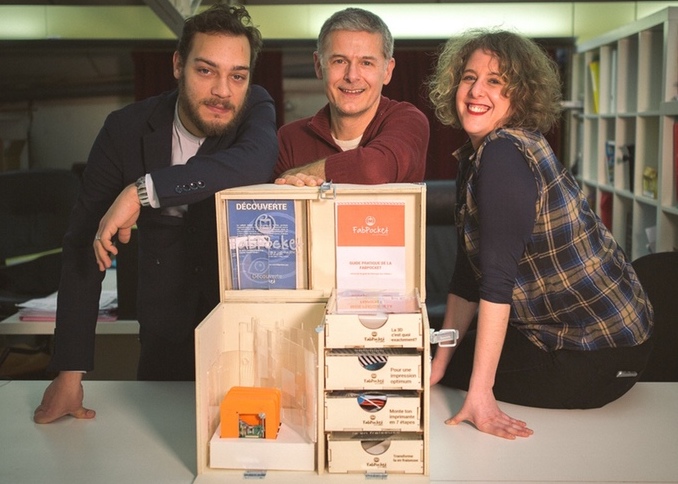
FabPocket is a portable box that introduces people to 3D printing. Created by Le Tarmack, a Paris-based company specialized in additive manufacturing, the box is designed primarily for schools, start-ups, incubators and other third-spaces that have yet to acquire their own CNC machines. The kit provides an educational and practical introduction to 3D printing through building a 2-in-1 machine that combines the functions of a 3D printer and a digital milling machine. According to the team, the machine can be assembled in less than an hour, by following five instruction modules consisting of reference files, practical exercises and practice materials. Le Tarmack launched a crowdfunding campaign on Kickstarter on February 10 to raise a goal of 30,000€ ($31,600) to manufacture the first FabPockets. The company plans to ship them in July 2017, with a discounted price of 489€ ($515) for the first backers.
Presentation of FabPocket:
MakerBox: to get inside the studio
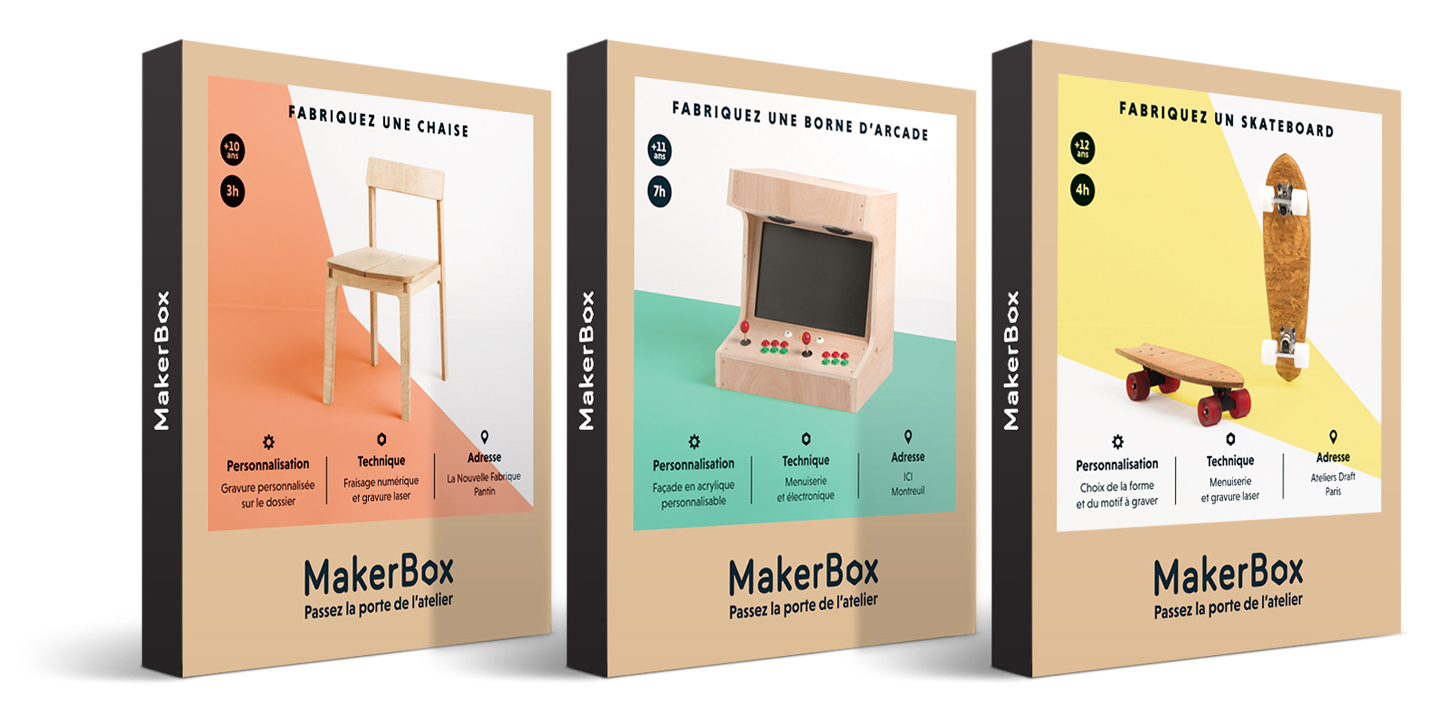
Brewing your own beer, assembling a 3D printer, making a skateboard or screen-printing cushions… Not unlike a gift box, the MakerBox—first launched by the magazine Usbek & Rica in 2015 (which we covered here)—allows you to build and customize an object in a fablab or a makerspace member of their partner network anywhere in France. Each box gives you access to a studio and its digital or analog machines, accompanied by a qualified technician to guide you through making the object, along with all the necessary materials (wood, textiles, metals, electronic components). The currently available 25 MakerBoxes introduce a number of skills, such as laser cutting or 3D printing, but also woodworking, screen-printing, sewing… Prices range from 59€ ($62) for custom jewelry to 799€ ($842) to take a home a completely assembled arcade game cabinet.
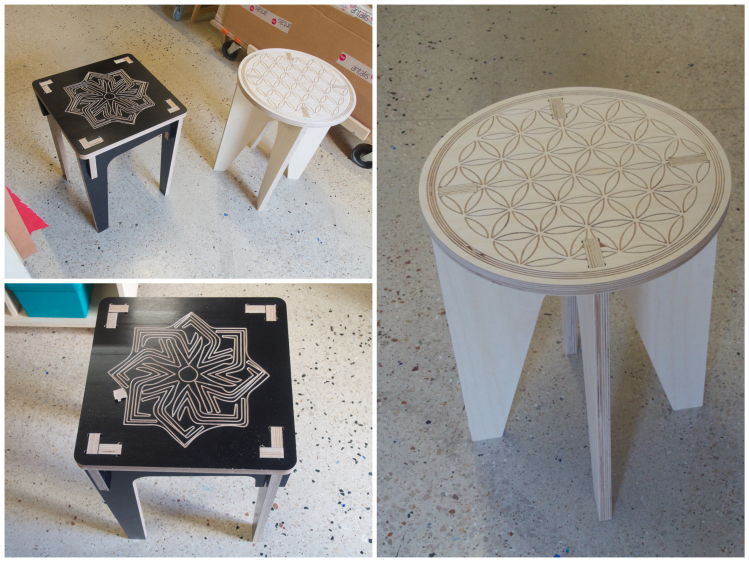
Boxes for artist makers
Field kit: for musician makers
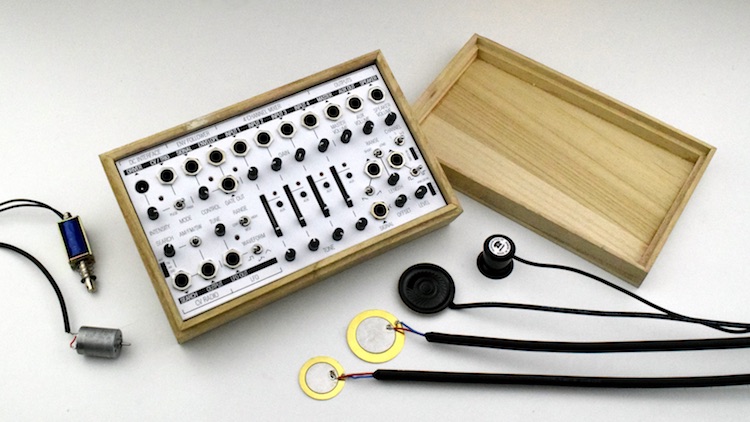
Concrete music also deserves its own box. Field Kit is a kit for budding John Cages that amplifies the movement of everyday objects, converting it into sound, as well as interpreting heat or light signals in order to integrate them into a musical composition or improvisation. Conceived by Koma Elektronik in Berlin, this electro-acoustic workstation comprises a 4-channel mixer, radio receiver, low-frequency oscillator (LFO) and an interface to activate buzzers, motors and fans to modulate the sounds. Launched on Kickstarter, the campaign raised almost 300,000€ ($316,000) for their 20,000€ ($21,000) goal. The first boxes should be delivered in May. Prices range from 179€ ($188) for the DIY version to 229€ ($240) for the fully assembled product. Note: Koma Elektronik also offers a 59€ ($62) expansion pack that includes microphones, speakers, sensors and motors to spin or strike objects like miniature percussion instruments.
Audio samples of various Field Kit functions:
Rikiki Suitcase by Julien Levesque: for data-poets
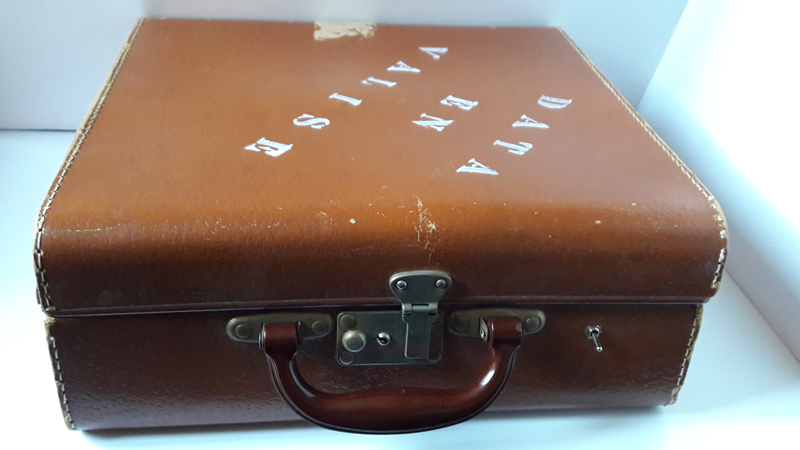
He is known for Little Umbrella, the weather-forecasting cocktail parasol, or for his Datadada performances with Albertine Meunier. Artist Julien Levesque juggles connected objects, data, APIs. In salesman mode, he travels door-to-door through schools, organizations and art centers with his Rikiki Suitcase, a nomadic mini-workshop to make crazy interactive installations, learn to code, hack objects and data. Examples: a connected penguin race, a machine that serves no purpose other than to understand the concept of interactivity, a dictation catapult that is triggered by zero mistakes. His “The Rikiki Suitcase boxes up data” events, open to all, last three hours and fall somewhere between educational workshop and art performance. The next one is scheduled for May 13 at La Gaîté Lyrique in Paris, for the Airports/City-World exhibition. An ideal theme for opening up your connected suitcase. And it’s free.
